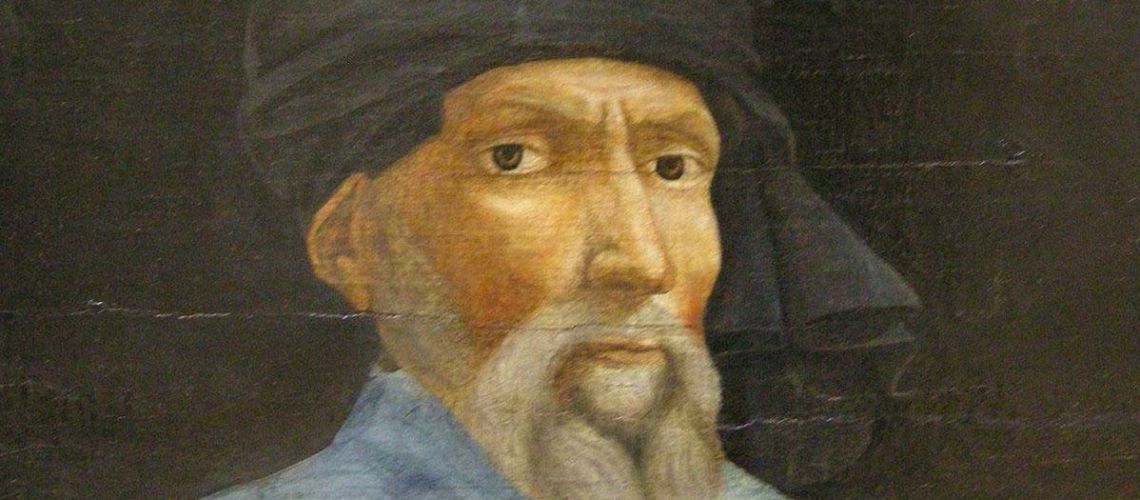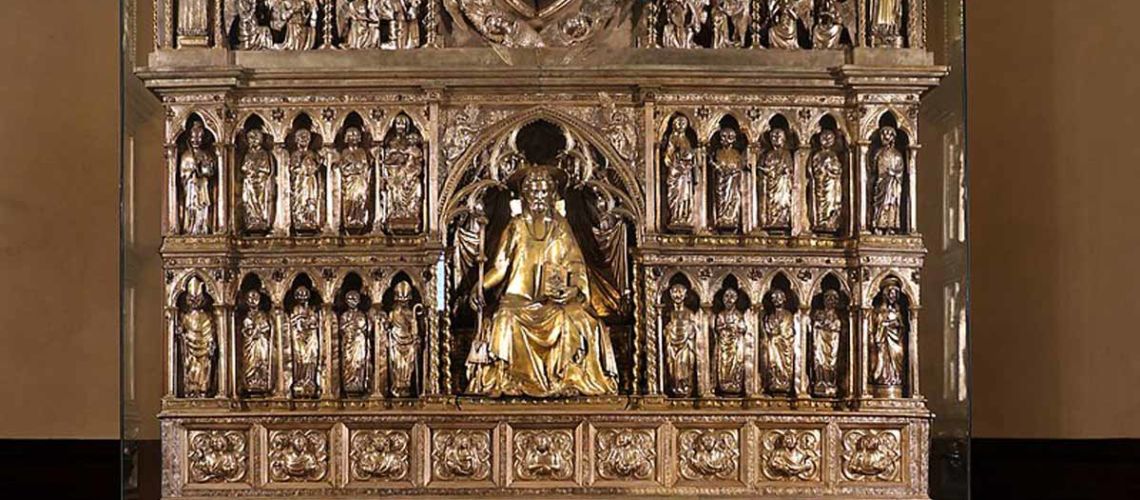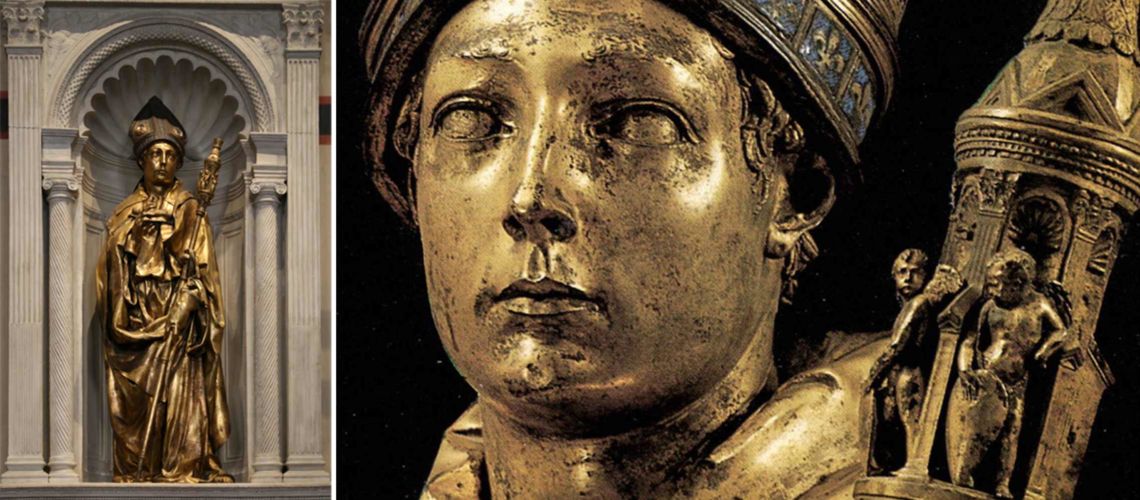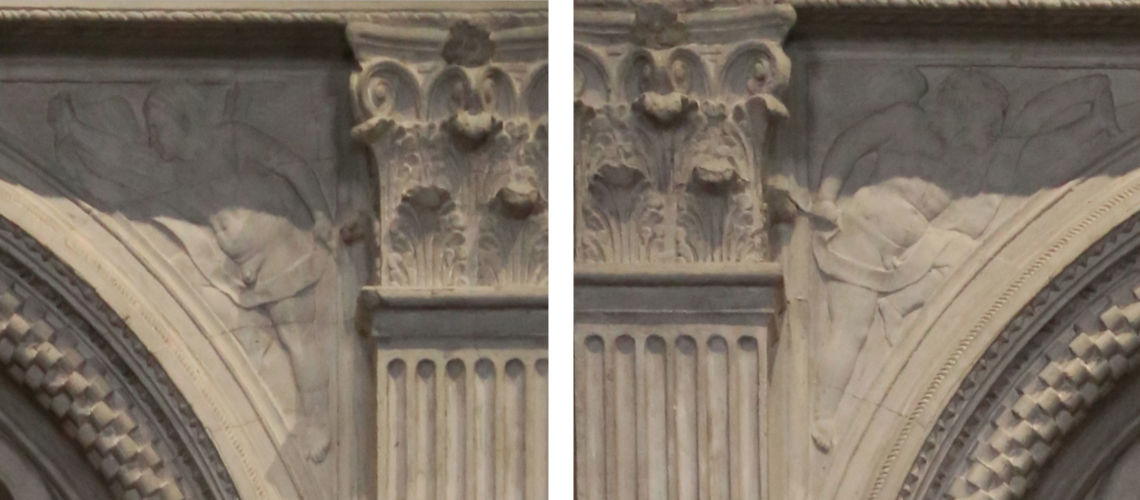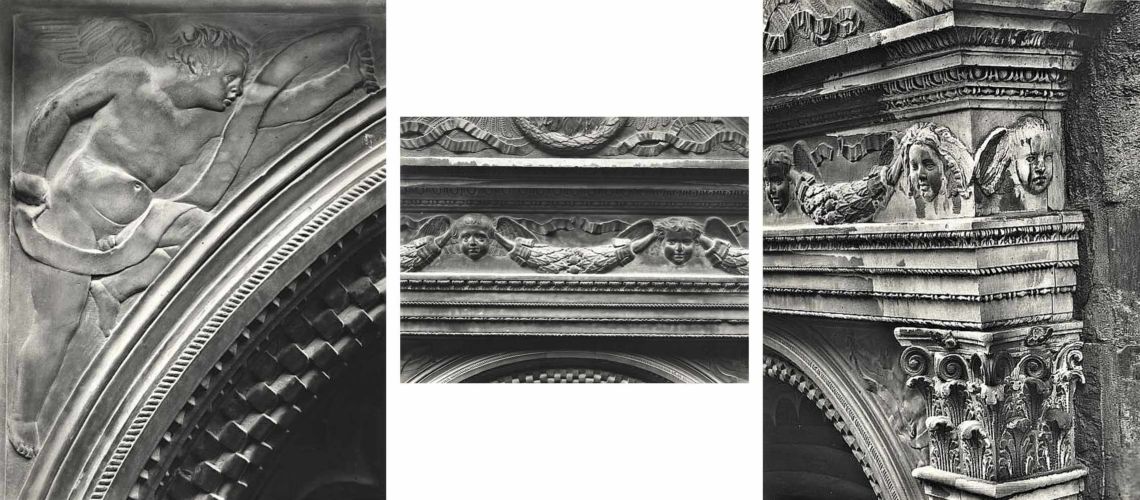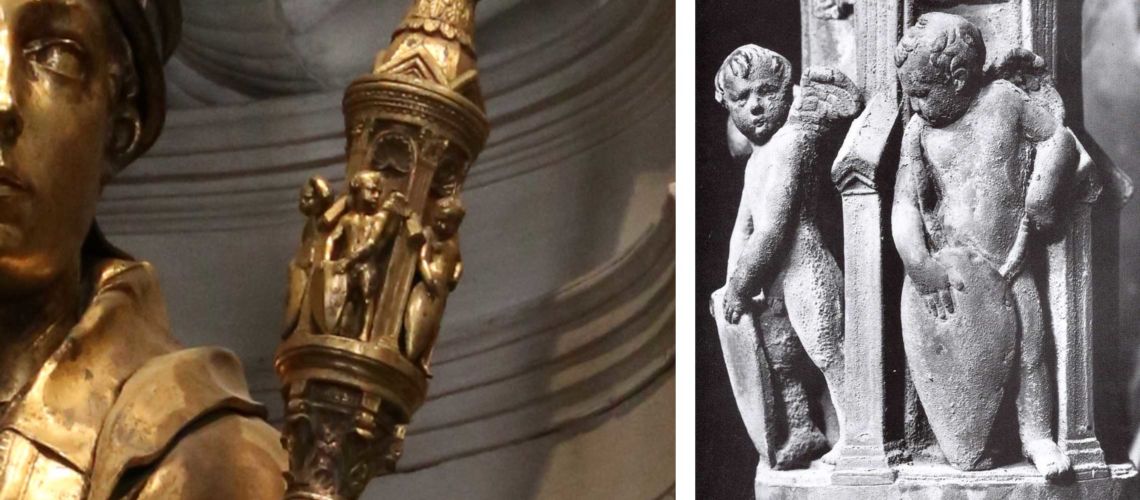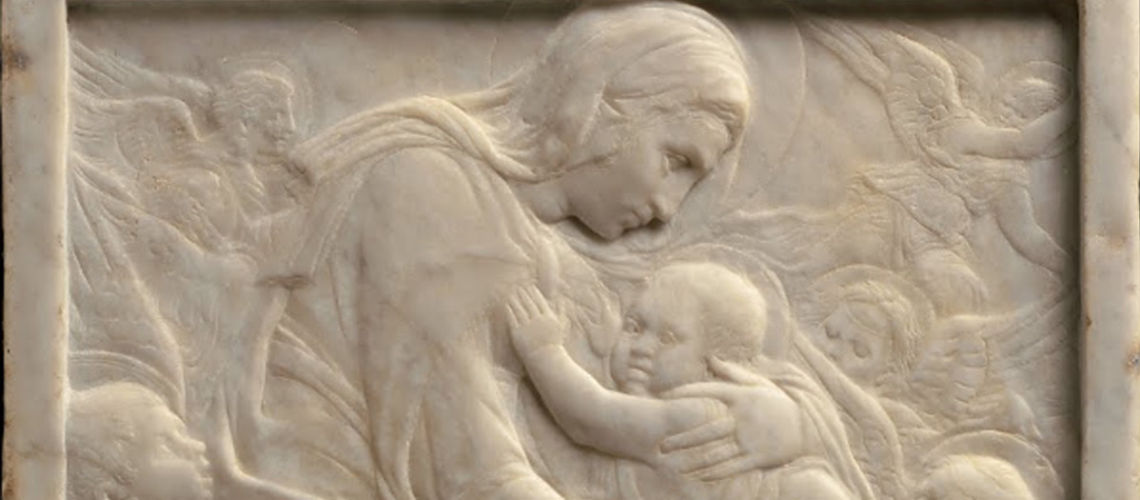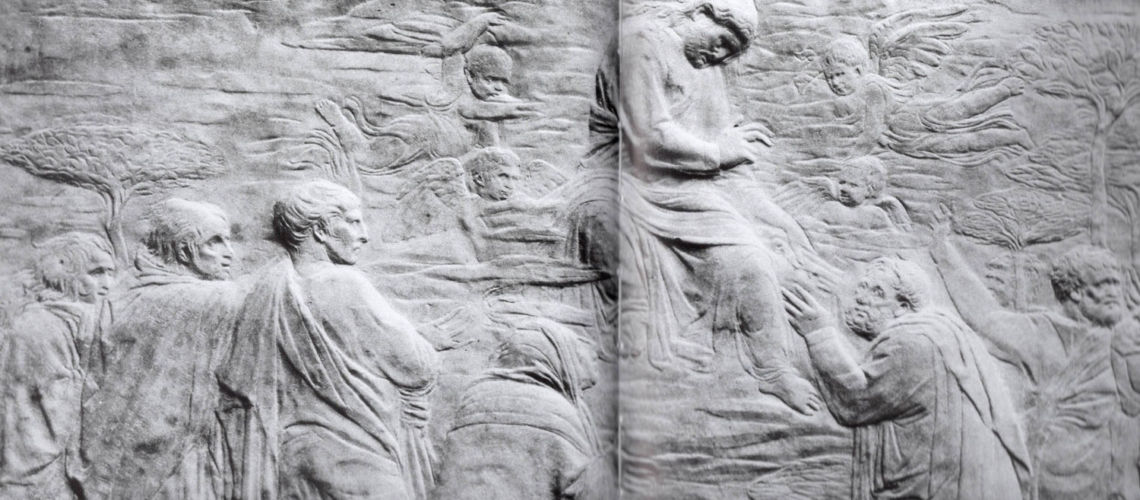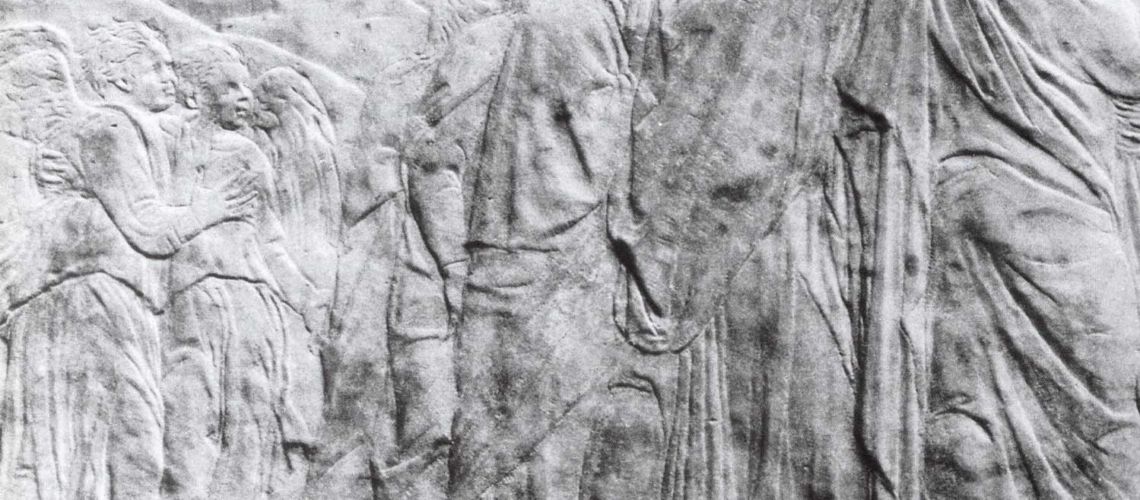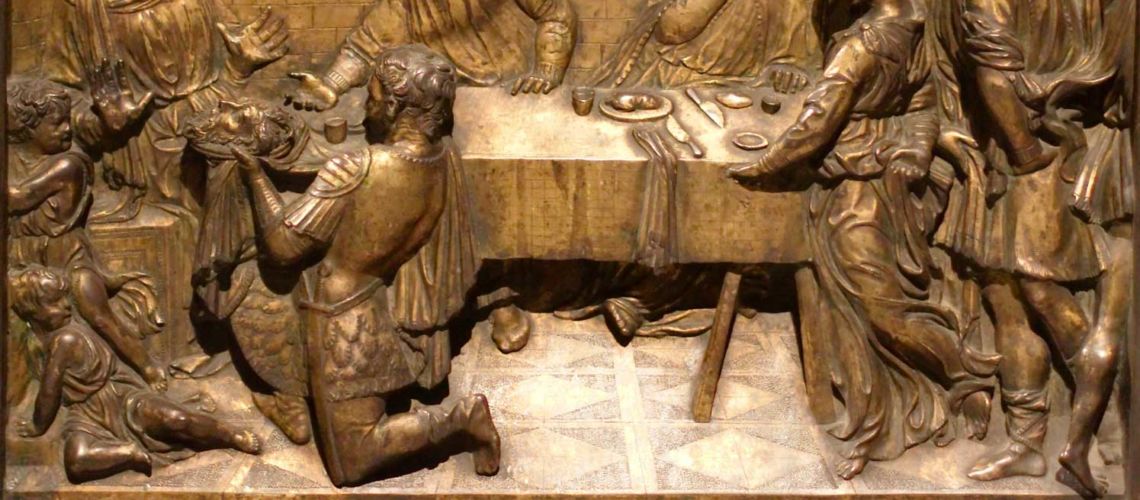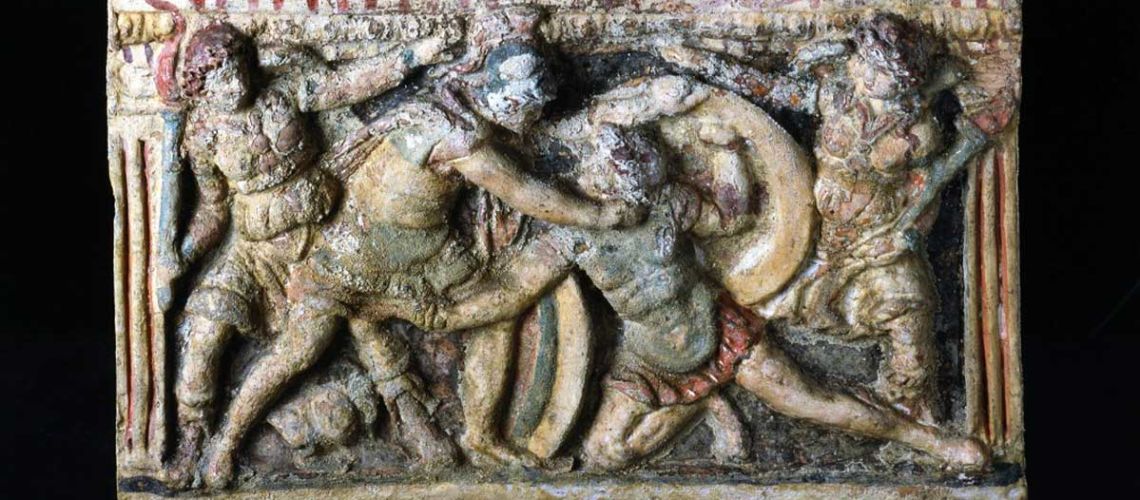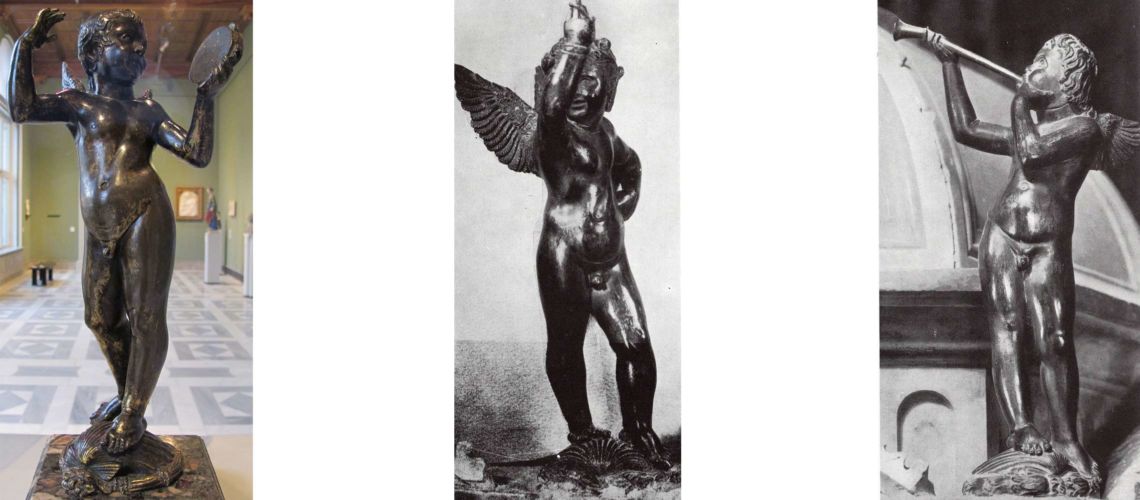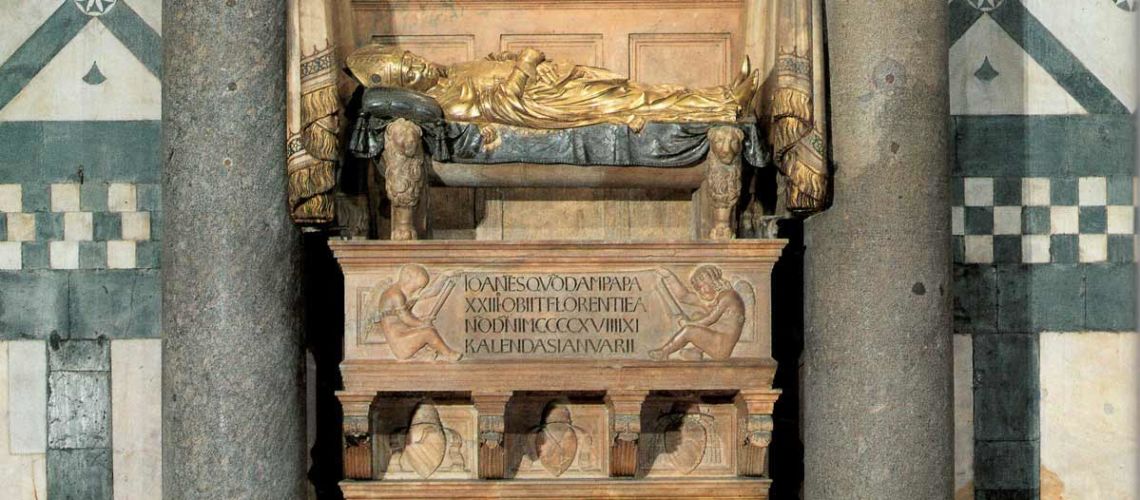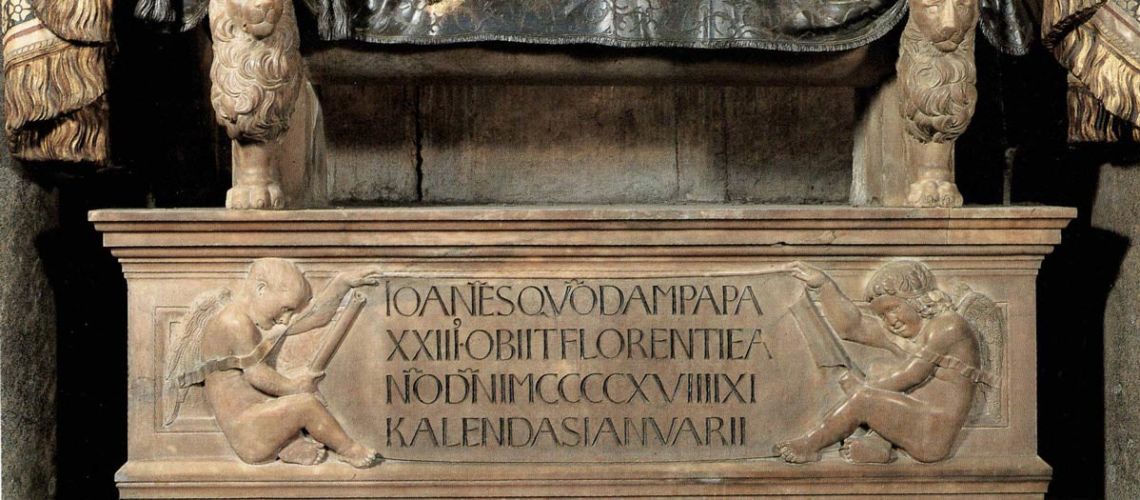Donatello and the putto in the sculpture - Part III
Donatello from 1420 to 1440
Donato di Niccolò di Betto Bardi, known as Donatello, was born in Florence in 1386. He had a very long life, he died in Florence in 1466 at the age of 80 years.
He was educated in the house of the Martelli’s, very rich Renaissance lords who had made money as arms makers, then allied with the Medici family. He was noble and elegant, but this did not prohibit him in Pistoia from beating and seriously injuring the German Anichinus Pieri, for whom he was condemned.
It was probably in Pistoia that he worked as a goldsmith apprentice together with Brunelleschi for the great silver altar for the city’s cathedral.
The friendship with Brunelleschi was very important for Donatello; in fact they went together, from 1402 to 1040, to Rome to study and draw ancient Roman art. In 1404 he was back in Florence where until 1407 he worked as an aide to the first door (north) of the baptistery cast with lost wax by Ghiberti. From 1406 along with other sculptures for the city of Florence he worked at the Porta della Mandorla of the Florentin Cathedral and later with Jacopo della Quercia at the baptismal font of Siena. And in Orsanmichele with Nanni di Banco. He had the possibility to see the new typology of the type of classical Roman putto.
Between 1423 and 1425 he sculpted and cast the statue of Saint Louis of Toulouse commissioned by the Guelph Party for an external niche of Orsanmichele (Museum of the Opera of Santa Croce, Florence)
Donatello in the architecture of the marble niche sculpts two cherubs keeping a ribbon in his typical “stiacciato” bas-relief style, along with other cherub heads.
Donatello decorates the upper part of the pastoral stick of the saint with niches from which small putti stand out in the round and hold arms; although very small, they are the first bronze statuettes of the ‘400.
In the marble Madonna and Child in her arms sitting on the clouds, nine winged and half-naked putti-Eroti as angels (previously the angels were heavily dressed) are sculpted foreshortening with the “allo stiacciato” technique typical of Donatello, (Mus. Fine Arts Boston) performed between 1425 and 1428.
Even in another bas-relief in “stiacciato”, the Ascension and the handing over of the keys to St. Peter (Victoria & Albert Mus. London) which is believed to have been carved in the same period as the previous (1425-1428), there are small angels plump putti dressed in veil. Those at the top are classical,
those at the bottom, more adults, have more the appearance of angels.
The musician and dancing angels and the banquet of Herod are part of the baptismal font of the Baptistery of Siena, performed in collaboration between Ghiberti, Jacopo della Quercia, Turino di Sano, Giovanni Turini and Donatello. The Font was made between 1416 and 1427. In 1416 Ghiberti went to Siena, in 1417 he created a model on which to apply to the base bas-reliefs and all-round bronze figures. Two bas-reliefs were entrusted to Ghiberti (Baptism of Christ and Capture of the Baptist), two to Jacopo della Quercia (Expulsion of Zechariah from the Temple and the Banquet of Herod), two to Turino di Sano together with his son Giovanni Turini (The birth of the Baptist and the Baptist’s Prayer). In 1423 Jacopo had not yet begun to model of the Banquetof Erode, which was then given to Donatello, to whom two statues of the Virtues and two putti were also contracted. In 1427 Ghiberti and Donatello finished their bas-reliefs, and Jacopo began his own.
In 1428 the completion of the whole Font was allocated to Jacopo.
In his bas-relief of the Banquet of Herod Donatello he inserted the figures of two absolutely classic putti half naked with ancient clothes quite frightened and horrified by the spectacle of Giovanni’s head on the plate. It is the first time that putti are placed in the dramatic and horrible scene of the beheading of the Baptist.
The motif of the left leg of the putto in the ground is also of classical inspiration, probably from some ancient sculpture or an Etruscan cinerary urn, such as the one at the Vatican Museums of Thana Helusnei.
At the top of the Font there were originally 6 all-round bronze cherubs, only four remained, of which two by Donatello, executed in 1429, and two by Turini executed in 1431. Of the Donatello’s, one plays the horn, another one dances and plays the tambourine (Mus. Bode Berlin). Donatello has created here the dancing putto that derives from the angels (adults) musicians of the Middle Ages. They are the precursors of the cherubs of the choirs of Florence and Prato. They also have the characteristic of being autonomous, that is to say, once detached from the Font, small statues that do not require any background to exist, which anticipate the largest all-round sculptures of the Renaissance. They stand on a shell surrounded by a crown symbols of birth (baptism) and victory (on death).
The antipope Baldassarre Coscia Giovanni XXIII elected in 1410 died in Florence in 1419. Donatello together with Michelozzo designed and built his tomb inside the Baptistery of Florence.
On the base on which the sarcophagus rests, two naked winged putti holding a parchment with an inscription are carved in bas-relief. /p>
The use of pagan cherubs in the tomb of a pope makes us understand that at the beginning of the fifteenth century the figure of the putto-Erote had been serenely re-Christianized.
Below, three winged heads of cherubs hold wreaths.

